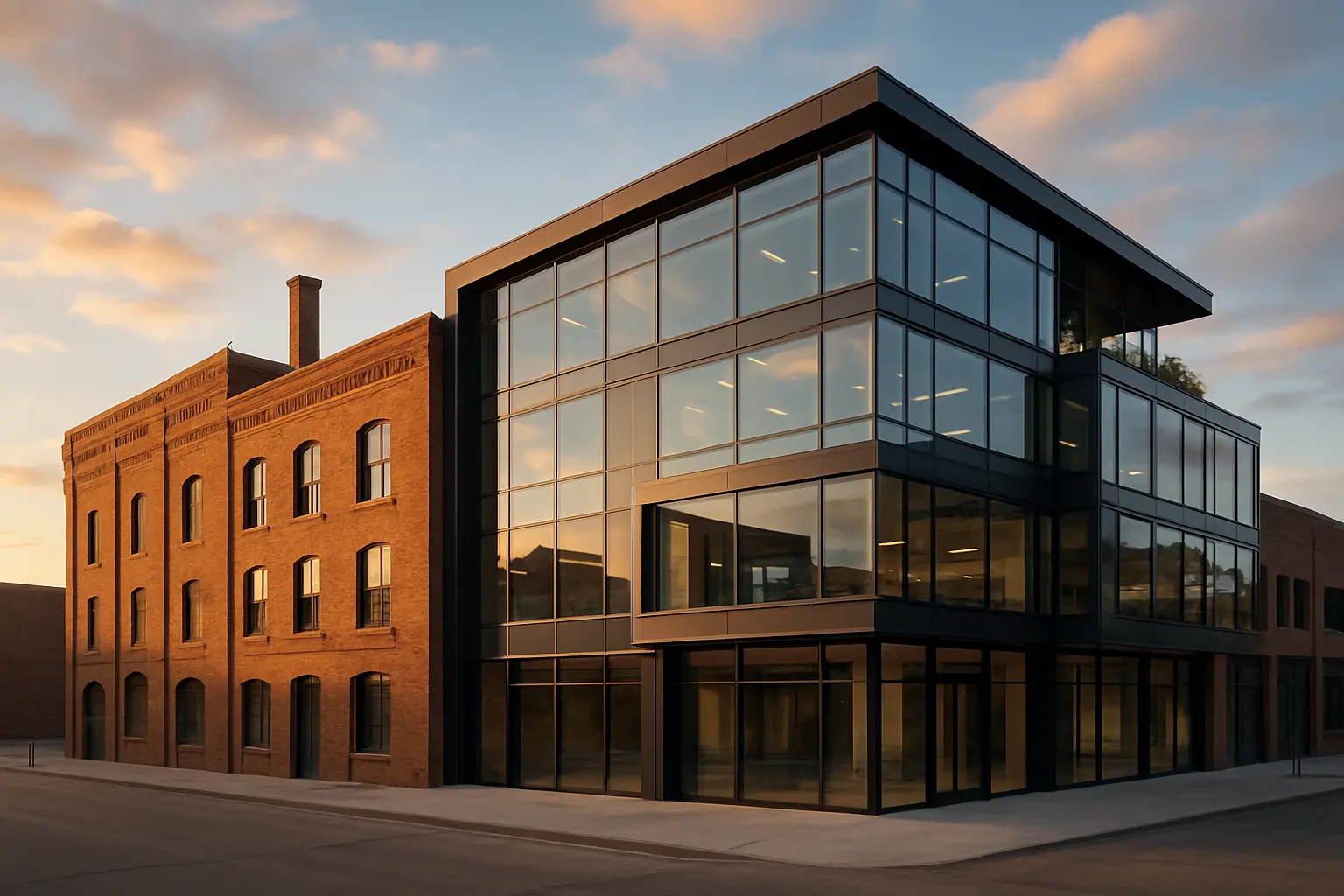From Industrial to Innovative: Omaha's Commercial Space Revolution
Discover how local businesses are transforming old warehouses into cutting-edge mixed-use developments, creating unprecedented opportunities for investors and entrepreneurs.

The Evolving Landscape
Omaha's commercial real estate scene is undergoing a remarkable transformation, breathing new life into the city's industrial heritage. Once-dormant warehouses and manufacturing facilities are emerging as vibrant hubs of innovation and community engagement, marking a new chapter in the city's urban development story.
These adaptive reuse projects are more than just renovations; they represent a fundamental shift in how businesses and communities interact with historical spaces. The movement has already transformed over 1.2 million square feet of industrial space into modern, mixed-use developments, creating environments that blend work, retail, and social spaces.
The Strategic Advantage
Investors and business owners are increasingly drawn to these revitalized spaces for several compelling reasons:
- Cost-Effective Development: Renovating existing structures often proves more economical than new construction
- Character and Authenticity: Historical buildings provide unique architectural features impossible to replicate in new developments
- Prime Locations: Many old industrial areas occupy strategic positions near downtown and established neighborhoods
- Sustainability Benefits: Adaptive reuse projects typically have smaller carbon footprints than new construction
Financial Incentives
Local development initiatives have created attractive financial incentives for investors, including tax increment financing (TIF) and historic preservation tax credits. These programs have made renovation projects increasingly viable, with returns on investment often exceeding traditional commercial development projects.
Success Stories
The transformation of Omaha's industrial spaces has produced several notable success stories:
The Warehouse District Revival
The Cooper Commons project exemplifies this trend, converting a former manufacturing facility into a thriving mixed-use development. The space now houses:
- Tech startups and creative agencies
- Artisanal food vendors and restaurants
- Boutique retail spaces
- Community event venues
"These developments aren't just changing buildings; they're creating entirely new neighborhoods and opportunities for our community," notes Sarah Martinez, local urban development expert.
Impact on Property Values
The ripple effect of these transformations has been significant. Residential properties within a half-mile radius of major renovation projects have seen average value increases of 15-20% over the past three years. This appreciation has created a positive feedback loop, attracting more investment and development to these emerging districts.
The Future Outlook
Omaha's commercial-residential development landscape continues to evolve, with several exciting trends emerging:
- Technology Integration: Smart building features and sustainable energy systems
- Flexible Spaces: Adaptable layouts that can evolve with changing business needs
- Community Focus: Increased emphasis on public spaces and community amenities
For investors and entrepreneurs, the opportunity to participate in Omaha's commercial space revolution remains compelling. With several major projects in the pipeline and continued strong market demand, the transformation of the city's industrial spaces shows no signs of slowing.
The revitalization of Omaha's industrial spaces represents more than just a real estate trend—it's a blueprint for sustainable urban development that honors the past while building for the future.


